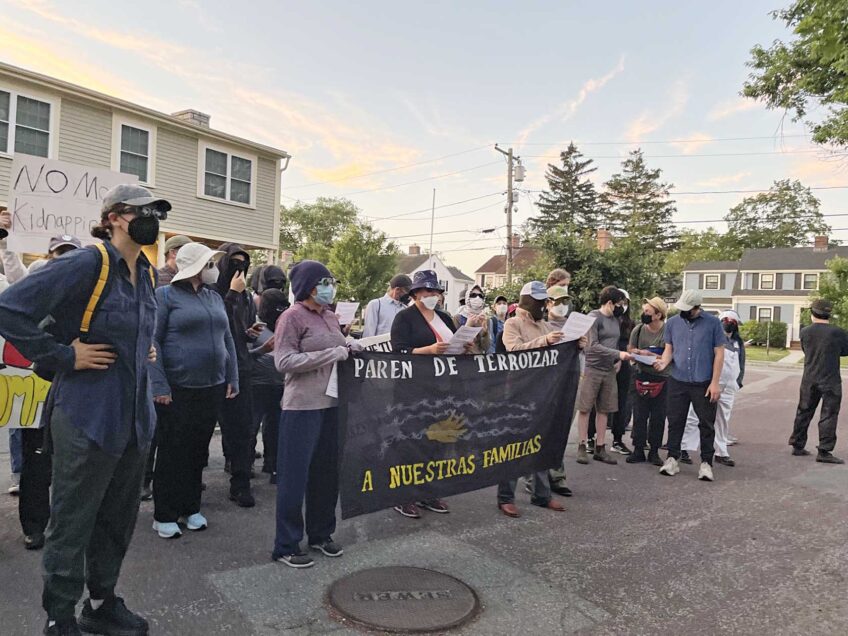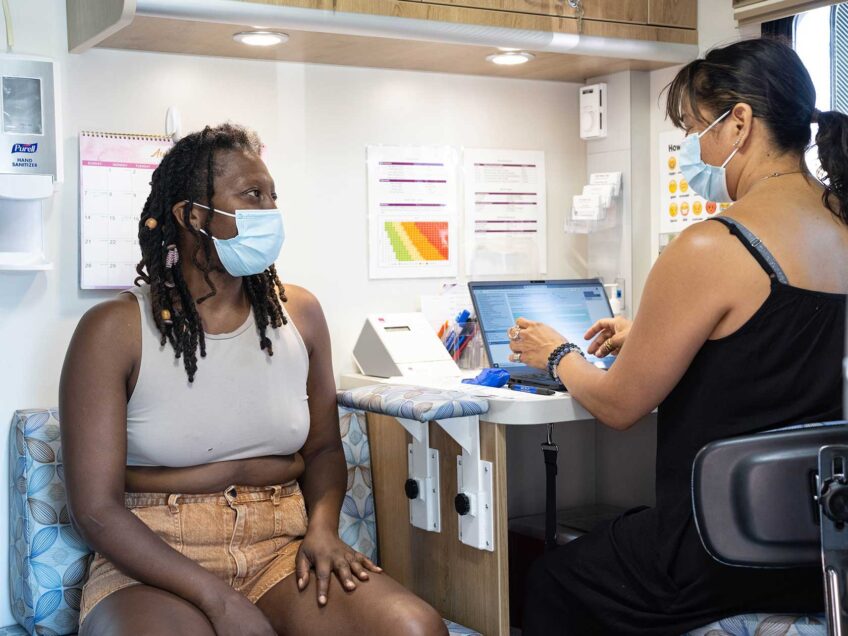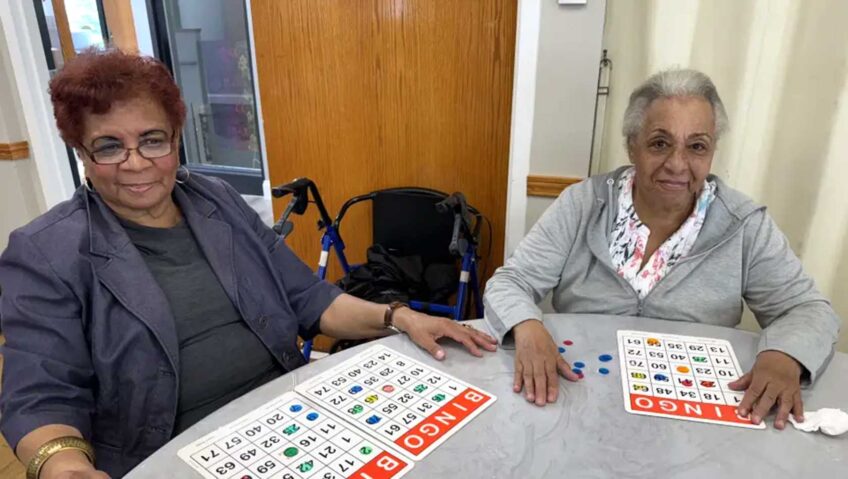Group pushes for reform to vocational school admissions
Activists gathered in a Zoom meeting March 18 to address discrimination within the state’s regional vocational school admissions process

Activists gathered in a Zoom meeting March 18 to address discrimination within the state’s regional vocational school admissions process, which uses a ranking system to admit student bodies that are mostly white, English-language speakers.
The group is calling on Gov. Charlie Baker, Education Commissioner Jeff Riley and the state Board of Elementary and Secondary Education to implement a lottery system instead.
“Vocational schools are public schools, but they are allowed to admit students by ranking them; ranking them by their grades, attendance, discipline and guidance counselors’ recommendations,” said Jack Livramento, a member of the United Interfaith Action of New Bedford and Fall River and Massachusetts Communities Action Network. “All these factors have been found to be discriminatory, and together they violate both state and federal laws.”
Business owners, teachers and advocates pushed for reform during the Zoom event, which was hosted by the Vocational Education Justice Coalition. A Feb. 22 report found evident admission disparities within the state’s 26 vocational schools, all of which opt to use ranking rather than lottery admissions. Students of color face daunting statistics when applying. Their chances are further reduced if they’re economically disadvantaged, English learners or have a disability.
The report focuses on the state’s regional vocational high schools — schools that are funded jointly by multiple municipalities. Such schools tend to be better resourced than local vocational schools, such as Boston’s Madison Park Technical Vocational High School, and face stiffer competition for seats.
The acceptance rate for students of color was 60.4% versus 73.2% for white students; the acceptance rate for English language learners was 51.5% versus 69.1% for non- English language learners. Some gaps were even larger: the acceptance rate for economically disadvantaged students was 58.5% versus 75.4% for wealthier students.
The admission statistics only tell half the story. Many students don’t even apply, since many anticipate rejection.
“[The report] doesn’t even count all the students who have been denied or who are discouraged from applying because they don’t have strong records in grades, attendance and discipline,” said Livramento.
Students struggling in school often face difficulties at home that wealthy white students do not experience, said Beth Kontos, the President of American Federation of Teachers in Massachusetts. A poor attendance record does not always reflect a child’s aversion to learning. Kontos called this attendance ranking “harmful,” citing factors like housing insecurity that prevent students from showing up to class.
Kontos also noted that discipline is often misinterpreted among Black children, and many are punished more harshly than their white peers. Discipline is also subjective, she said, so these records should not limit a child’s future in a vocational school.
Grades shouldn’t be a determinant either, said Kontos. “Ranking by grades? Think about this. Where were you at the end of 8th grade?” she asked.
Nina Hackel, who owns a kitchen remodeling company called Dream Kitchens, listed other reasons in support of the lottery-based admission system.
“There’s no doubt in mind that the admissions policy hinders disadvantaged students’ opportunities,” she said. “But in addition to that, it actually hurts our economy. I have an extreme labor shortage.”
Hackel said that the average ages of electricians and plumbers are 56 and 57, respectively. She said that her business doesn’t have a contractor under age 50, and no people of color are even applying.
Regional vocational schools prioritize students with higher GPAs, and these students typically end up at colleges or other higher education institutions.
Hackel said that 80% of students in the vocational schools end up in college.
“It’s at the expense of kids that would end up in my industry,” she said, adding that “you need kids in trades.”
Gladys Vega, executive director of the Chelsea nonprofit La Colaborativa, emphasized how a vocational education gives youth an “alternative pathway to dignified work opportunities.” But many middle school students are barred from these opportunities.
“We will continue to work very hard for access to equity within the vocational school system for the sake of our youth and the sake of our community and for the future, and to end the generational poverty,” Vega said. “If we don’t change it now, it will repeat over and over throughout the decades.”
Disparities are evident in the current breakdown of state vocational schools. Many public middle schools do not proportionately feed into vocational high schools. Worcester East Middle School, for instance, is 23% white, while Southern Worcester County Regional Vocational Technical High School is 85.1% white. Only 25.9% of the vocational school’s student body is economically disadvantaged, compared to 74.7% of the middle school.
When comparing many public high schools to nearby vocational schools, the results are similar. Revere High is 29.9% white, and Northeast Metropolitan Regional Vocational Technical in Revere is 64.7% white. A majority of the Revere High student body, or about 67%, speaks a first language that isn’t English. At the vocational school, only 18.7% of students don’t use English as a first language.
New Bedford Mayor Jon Mitchell has been noticing disparities within the admissions system for years. He said that he started talking to other mayors across the state about discrimination within the ranking system.
“Last year, I wrote a letter just before the pandemic,” he said. “Twenty-three mayors around the state signed onto it and said this process has to end. There are enormous disparities around the state in vocational admissions that cannot be justified by any legitimate education purpose.”
He said that vocational schools are given the license to cherry-pick their students, with admission officials hoping to build classes that perform better and can boost the school’s test scores. This system benefits only the adults who run the institution, said Mitchell, rather than the students that need the education the most.
Mitchell said that the Massachusetts Department of Elementary and Secondary Education has been “aware of this all along.” He said that the numbers are evident every year, but DESE officials still have not acted.
“They’ve seen before their eyes the deep unfairness, especially to children who are immigrants, children of color,” he said.
Mitchell added that the time for “half-measures” is long over. “We need something that is more fair, transparent, more neutral. And that is a lottery,” he said.
In April, Commissioner Riley will give a presentation to the school board regarding the admissions system. He has not revealed his plan proposal, or lack thereof, to institute changes to the admission policy. Nevertheless, Mitchell said that Riley is “sympathetic to the problem” after years of working with schools and seeing the disparities up close.
“I am hopeful that he will move sufficiently in the right direction,” he said. “My guess is that we’ll move in the right direction — the question is whether it will be enough.”






